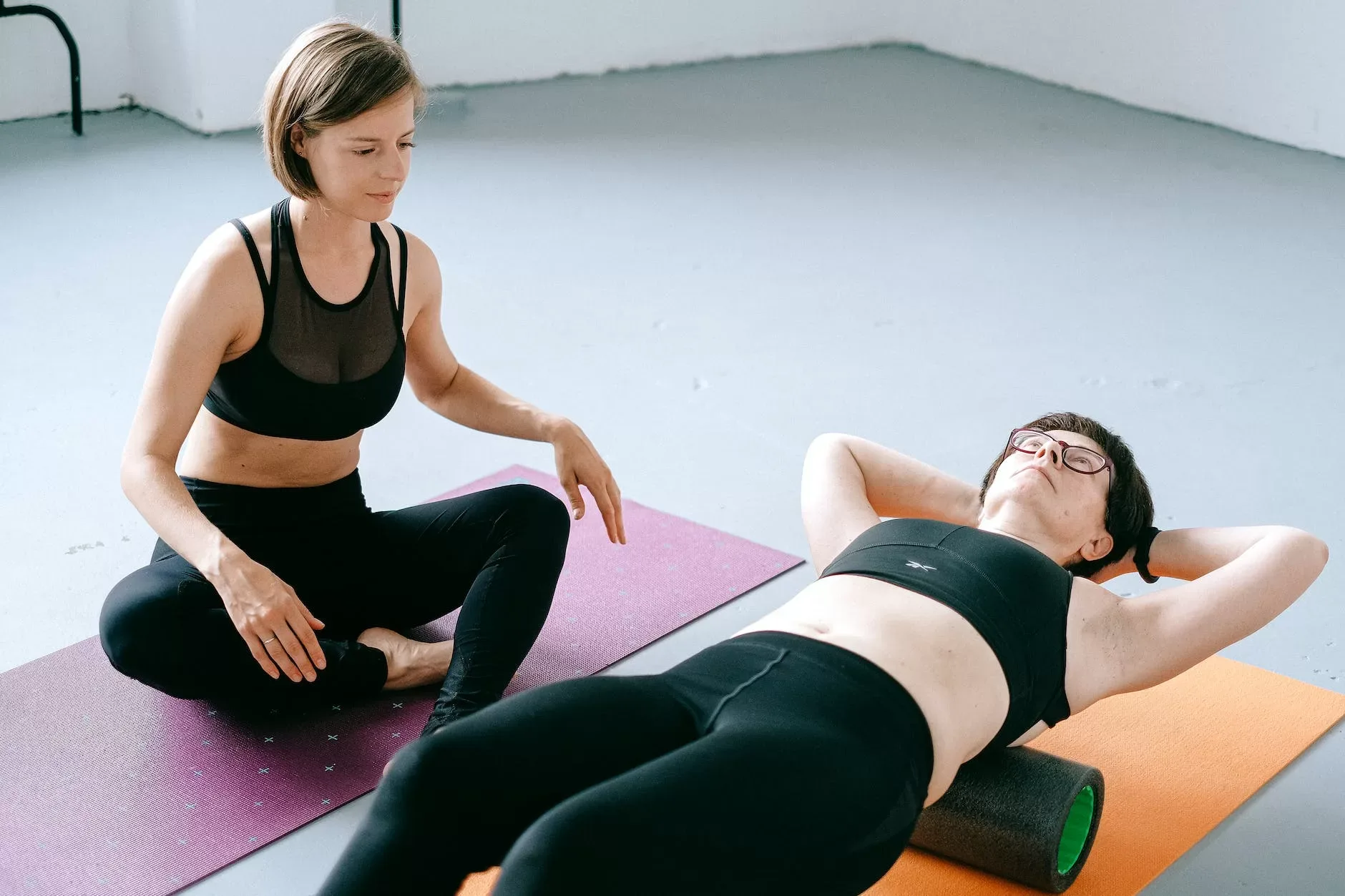Recover faster, prevent injuries, and improve performance with foam rolling.
Introduction
Rugby is a physically demanding sport that requires strength, agility, and endurance. As a rugby player, you are constantly pushing your body to its limits, subjecting it to intense workouts, challenging matches, and the risk of injuries. It’s crucial to prioritize your recovery and take proactive measures to prevent injuries. One such method gaining popularity among athletes is foam rolling. Foam rolling is a form of self-myofascial release that involves using a foam roller to apply pressure to specific areas of the body. In this article, we will explore the extensive benefits of foam rolling for rugby players and how it can enhance your performance on and off the field.
1. Improved Flexibility and Range of Motion
Flexibility and range of motion are essential for rugby players to perform at their best. Foam rolling aids in improving flexibility by breaking up adhesions and knots in the muscle tissue, known as trigger points. By applying pressure to these trigger points, you release tension and promote better muscle elasticity. Regular foam rolling sessions can help increase your range of motion, allowing you to move more freely and effectively during matches. Improved flexibility also reduces the risk of muscle strains and tears, keeping you in top shape throughout the rugby season.
2. Enhanced Muscle Recovery
Rugby players put their bodies through intense physical exertion, resulting in muscle soreness and fatigue. Foam rolling can significantly aid in the recovery process by increasing blood flow to the muscles. The pressure applied during foam rolling stimulates blood circulation, which helps deliver oxygen and essential nutrients to the muscles. Moreover, foam rolling assists in the removal of metabolic waste products such as lactic acid, which contributes to muscle soreness. By incorporating foam rolling into your post-training or post-match routine, you can accelerate muscle recovery and reduce downtime between sessions.
3. Injury Prevention
Injuries are a common occurrence in rugby, and they can sideline players for significant periods, affecting both their performance and team dynamics. Foam rolling plays a vital role in injury prevention by addressing muscular imbalances and tightness. It helps identify areas of muscle tightness or weakness and allows you to target them specifically during your foam rolling sessions. By releasing tension and promoting balanced muscle development, you reduce the risk of muscle imbalances that can lead to injuries. Additionally, foam rolling improves joint mobility and stability, enhancing overall body mechanics and reducing the likelihood of strains or sprains.
4. Alleviation of Muscle Tension
Intense training sessions and matches can leave rugby players with tight and knotted muscles, leading to discomfort and decreased performance. Foam rolling serves as an effective tool for relieving muscle tension. The pressure applied by the foam roller helps break up adhesions and trigger points, releasing tight muscles and promoting relaxation. Regular foam rolling sessions can significantly reduce muscle soreness and tightness, allowing you to perform at your best during training and matches.
5. Improved Circulation and Warm-Up
Proper blood circulation is crucial for optimum athletic performance. Foam rolling acts as a form of self-massage, stimulating blood flow throughout the body. By increasing circulation, foam rolling helps warm up the muscles before physical activity, preparing them for the demands of training or matches. Incorporating foam rolling into your warm-up routine can enhance muscle function and activation, improving overall performance and reducing the risk of injury during intense physical activity.
6. Myofascial Release and Relaxation
Foam rolling facilitates myofascial release, a technique that targets the connective tissue surrounding your muscles, known as fascia. Myofascial release helps release tension in the fascia, allowing for greater mobility and muscle function. By rolling on the foam roller, you apply controlled pressure to the fascia, promoting relaxation and reducing muscle tightness. The relaxing nature of foam rolling can also have a positive impact on your mental well-being, reducing stress and promoting a sense of calm after intense training sessions or matches.
7. Cost-Effective and Convenient
One of the greatest advantages of foam rolling is its cost-effectiveness and convenience. Unlike other recovery methods that may require professional assistance or specialized equipment, foam rolling can be done in the comfort of your own home or at the gym. Investing in a foam roller is relatively affordable, and it can last for a long time with proper care. With just a few minutes each day dedicated to foam rolling, you can reap its numerous benefits without breaking the bank or disrupting your busy training schedule.
8. Enhanced Performance and Power
Ultimately, the primary goal of any rugby player is to perform at their best and maximize their power on the field. Foam rolling can directly contribute to improved performance by optimizing muscle function, flexibility, and range of motion. When your muscles are free from tightness and trigger points, they can generate more force and power, allowing you to perform explosive movements more effectively. By incorporating foam rolling into your training routine, you can unlock your full potential as a rugby player and gain a competitive edge over your opponents.
Conclusion
Foam rolling is a highly effective self-myofascial release technique that offers a myriad of benefits for rugby players. From improved flexibility and muscle recovery to injury prevention and enhanced performance, foam rolling should be an essential component of every rugby player’s training and recovery regimen. Incorporate foam rolling into your routine and experience the positive impact it can have on your physical and mental well-being, enabling you to excel on the rugby field like never before.
How to Use a Foam Roller
A step-by-step guide to effectively use a foam roller for self-myofascial release.
Foam rolling is a simple yet effective technique for self-myofascial release that can provide numerous benefits for rugby players. Whether you’re a beginner or have experience with foam rolling, understanding the proper techniques and guidelines for its use is essential to maximize its effectiveness. In this guide, we will walk you through the steps of using a foam roller to ensure you get the most out of your foam rolling sessions.
Step 1: Choose the Right Foam Roller
The first step in using a foam roller is selecting the right one for your needs. Foam rollers come in various densities and sizes, each suited for different purposes. Beginners may prefer a softer foam roller, while more advanced users may opt for a firmer one for deeper pressure. Consider the size of the foam roller as well, as longer ones allow for more versatility in targeting different muscle groups. Experiment with different options to find the foam roller that feels comfortable and suits your requirements.
Step 2: Find a Comfortable Space
Next, find a quiet and comfortable space where you can perform your foam rolling routine without distractions. Ideally, choose a flat and open area with enough room for you to move freely. You may want to use a yoga mat or exercise mat to provide some cushioning and prevent the foam roller from sliding on smooth surfaces.
Step 3: Start with a Warm-Up
Before diving into foam rolling, it’s essential to warm up your muscles to prepare them for the upcoming release. Perform a few dynamic movements such as arm swings, leg swings, and gentle stretches to increase blood flow and loosen up your muscles. This warm-up will make the foam rolling process more effective and comfortable.
Step 4: Target the Desired Muscle Group
Identify the muscle group you want to target and position yourself accordingly. For example, if you want to foam roll your quadriceps, start by sitting on the floor with the foam roller placed under your thighs. If you’re targeting your back, lie down with the foam roller positioned horizontally under your upper back.
Step 5: Apply Pressure and Roll
Once in position, use your body weight to apply pressure onto the foam roller. Begin rolling back and forth, moving the foam roller along the length of the muscle group you’re targeting. Use slow and controlled movements, allowing the foam roller to glide smoothly. If you encounter a particularly tight or sensitive spot, pause and hold the pressure on that spot for 20-30 seconds or until you feel a release of tension.
Step 6: Adjust Body Positioning
As you roll, adjust your body positioning to target different areas of the muscle group. For example, when foam rolling your quadriceps, you can shift slightly to one side to focus on the inner or outer portion of the muscle. Experiment with different angles and positions to effectively target the entire muscle group.
Step 7: Breathe and Relax
During the foam rolling process, remember to breathe deeply and try to relax as much as possible. Tensing up your muscles will make the experience uncomfortable and less effective. Focus on deep breaths and consciously release tension as you roll along the muscle group.
Step 8: Take It Slow and Gradual
Foam rolling is not a race, and it’s important to take it slow and gradual. Avoid rushing through the process or applying excessive pressure. Gradually increase the intensity and pressure as your muscles become more accustomed to foam rolling. Remember, it’s better to start with lighter pressure and gradually work your way up to deeper pressure.
Step 9: Cover all Targeted Muscle Groups
To gain maximum benefits from foam rolling, ensure that you cover all the targeted muscle groups. Spend an adequate amount of time rolling each muscle group and don’t neglect any areas that may require attention. Common muscle groups to focus on include the calves, quadriceps, hamstrings, glutes, back, and shoulders.
Step 10: Incorporate Foam Rolling into Your Routine
Consistency is key when it comes to foam rolling. Aim to incorporate foam rolling into your routine at least two to three times a week, if not more. You can include it in your warm-up routine before training sessions, as part of your post-workout recovery, or even on rest days to alleviate muscle tightness and promote overall muscle health.
Step 11: Listen to Your Body
Finally, listen to your body throughout the foam rolling process. While some discomfort or mild pain is expected during foam rolling, avoid pushing through sharp or severe pain. If you experience intense pain or feel any unusual sensations, stop and consult with a healthcare professional.
Conclusion
Foam rolling is a valuable tool for rugby players to enhance muscle recovery, improve flexibility, prevent injuries, and optimize performance. By following these step-by-step guidelines, you can effectively use a foam roller for self-myofascial release. Remember to be consistent, listen to your body, and gradually increase the intensity of your foam rolling sessions. With regular practice, foam rolling can become an integral part of your training and recovery routine, helping you stay at the top of your game on the rugby field.

